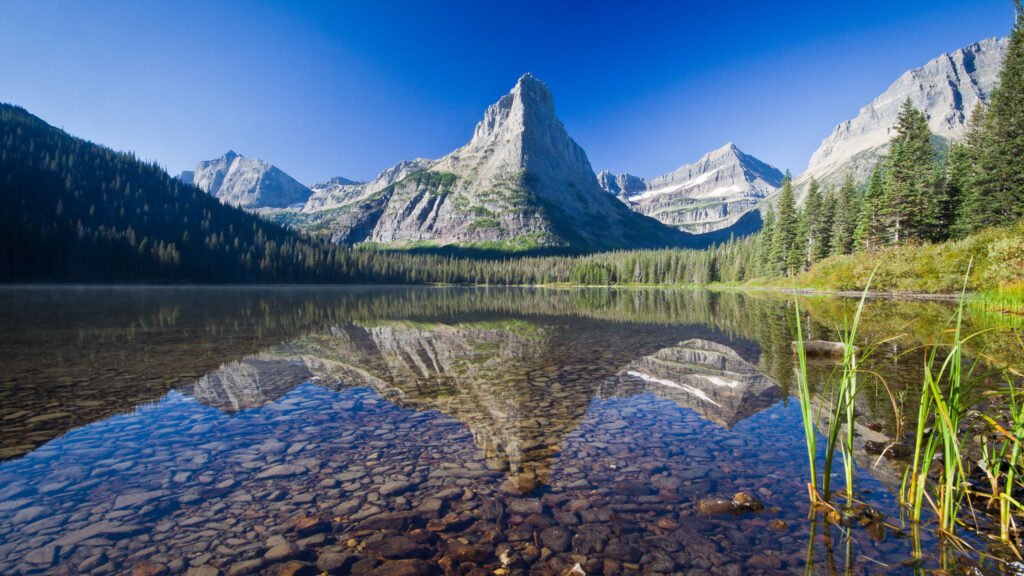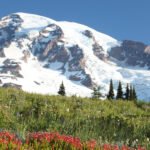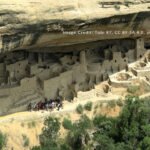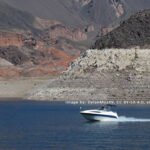Explore Glacier National Park in Montana: Discover its rich history, diverse wildlife, stunning attractions, activities, and conservation efforts. Plan your visit with our comprehensive guide.
Table of Contents
Introduction to Glacier National Park
Nestled in the rugged Rocky Mountains of Montana, Glacier National Park is a stunning natural wonder that draws millions of visitors each year. Known for its breathtaking landscapes, crystal-clear lakes, and diverse wildlife, this park offers an unparalleled experience for nature enthusiasts and adventure seekers alike. Established in 1910, Glacier National Park spans over a million acres, featuring more than 700 miles of hiking trails, making it a premier destination for outdoor activities. Whether you’re looking to hike, camp, or simply soak in the scenic beauty, Glacier National Park has something for everyone.
History and Background
Glacier National Park boasts a rich history that dates back thousands of years, with evidence of Native American habitation long before European explorers arrived. The park’s name derives from the remnants of glaciers from the last ice age, which shaped its dramatic landscapes. In the late 19th and early 20th centuries, the area garnered attention from conservationists and explorers, leading to its designation as a national park in 1910. The Great Northern Railway played a significant role in promoting the park, building lodges and creating access routes that made it a popular tourist destination.
Biodiversity of Glacier National Park
Glacier National Park is a haven for biodiversity, hosting a wide array of flora and fauna. The park is home to over 1,000 species of plants, including rare wildflowers like beargrass and glacier lilies. Its varied ecosystems, ranging from lush forests to alpine meadows, support a diverse range of wildlife. Visitors may encounter majestic animals such as grizzly bears, mountain goats, and bighorn sheep. The park’s waters teem with native fish species, including bull trout and cutthroat trout. Birdwatchers will delight in spotting over 270 bird species, from the common American dipper to the elusive peregrine falcon.
Famous Attractions in Glacier National Park
Glacier National Park is renowned for its iconic attractions that showcase the park’s natural beauty. The Going-to-the-Sun Road is a must-see, offering a scenic drive through the heart of the park with stunning views of mountains, glaciers, and valleys. Lake McDonald, the largest lake in the park, is famous for its crystal-clear waters and colorful pebble beaches. The Many Glacier area, often referred to as the “Switzerland of North America,” features picturesque landscapes, abundant wildlife, and excellent hiking opportunities. Logan Pass, the highest point on the Going-to-the-Sun Road, provides panoramic views and access to popular trails like the Hidden Lake Overlook.
Activities in Glacier National Park
The activities in Glacier National Park are as varied as its landscapes, offering something for every type of adventurer. Hiking is a major draw, with trails ranging from easy walks to challenging backcountry treks. Popular hikes include the Highline Trail, Grinnell Glacier Trail, and Avalanche Lake Trail. For water enthusiasts, kayaking and canoeing on the park’s pristine lakes provide a peaceful way to explore. Wildlife watching and photography are favorite pastimes, with ample opportunities to capture the park’s diverse fauna in their natural habitats. During winter, the park transforms into a snowy wonderland perfect for cross-country skiing and snowshoeing.
Accommodations in Glacier National Park
Glacier National Park offers a variety of accommodations to suit different preferences and budgets. Within the park, historic lodges like the Many Glacier Hotel and Lake McDonald Lodge provide charming, rustic experiences with modern amenities. For those who prefer a more immersive nature experience, several campgrounds are available, including Apgar, Many Glacier, and St. Mary. Just outside the park, the towns of West Glacier, East Glacier Park Village, and Whitefish offer additional lodging options, from cozy cabins to full-service hotels. Advanced reservations are highly recommended, especially during peak season.
Weather Conditions in Glacier National Park
Weather in Glacier National Park can be highly variable, with conditions changing rapidly due to its mountainous terrain. Summers (June to September) are generally mild, with daytime temperatures ranging from 60°F to 80°F, though nights can be cool. This is the most popular time to visit, as most park facilities and roads are open. Fall (September to October) brings cooler temperatures and vibrant foliage. Winters (November to March) are cold and snowy, with many roads and facilities closed, making it a quieter time for those who enjoy winter sports. Spring (April to June) sees unpredictable weather, with melting snow and blooming wildflowers.
Visitor Information for Glacier National Park
Planning your visit to Glacier National Park is essential for a smooth and enjoyable experience. The park is open year-round, but access varies by season. Entrance fees are required, with options for single-day, seven-day, and annual passes. The park’s visitor centers, including Apgar Visitor Center and Logan Pass Visitor Center, offer maps, exhibits, and ranger-led programs. It’s important to be prepared for wildlife encounters and to follow safety guidelines, such as keeping a safe distance and storing food properly. Cell service is limited, so downloading maps and information in advance is advisable.
Conservation Efforts in Glacier National Park
Conservation is a cornerstone of Glacier National Park’s mission. The park is actively involved in preserving its unique ecosystems and combating the effects of climate change. Efforts include monitoring and protecting native species, restoring habitats, and conducting research on glacier recession. The park collaborates with local tribes, conservation organizations, and volunteers to implement sustainable practices. Visitors can contribute by following Leave No Trace principles, participating in citizen science projects, and supporting the Glacier National Park Conservancy, which funds important conservation initiatives.
Tips for Visiting Glacier National Park
To make the most of your visit to Glacier National Park, consider these practical tips. Arrive early in the day to avoid crowds, especially during the peak summer season. Dress in layers and be prepared for changing weather conditions. Carry bear spray and know how to use it, as the park is home to a healthy population of grizzly bears. Stay hydrated and bring plenty of water, particularly on longer hikes. Make reservations for accommodations and activities well in advance. Lastly, respect the natural environment by sticking to designated trails and packing out all trash.
For more information about Glacier National Park, visit the official park website Click Here.
Glacier National Park in Montana is a treasure trove of natural beauty, rich history, and diverse wildlife. Whether you’re seeking adventure, tranquility, or a deeper connection with nature, this magnificent park offers it all. By planning ahead and respecting the park’s conservation efforts, you can help preserve this stunning landscape for future generations. From its famous attractions and abundant activities to its essential visitor information and accommodations, Glacier National Park promises an unforgettable experience. Embark on your journey to explore one of America’s most spectacular national parks, and create memories that will last a lifetime.
You may also like DISCOVER THE WONDERS OF YELLOWSTONE NATIONAL PARK, WYOMING: ULTIMATE GUIDE








1 thought on “Discover the Majestic Beauty of Glacier National Park, Montana”